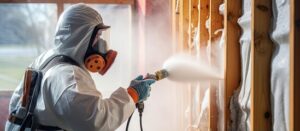If your property is overgrown with tangled bushes, briars, and vines it may look unkempt. Underbrush removal is essential if you are looking to sell your land or home because it improves the aesthetic appearance of your lawn and landscaping.

It also prevents snakes, ticks, rodents and other pests from hiding on your property. Underbrush Removal also promotes the health of your land as it removes competition for nutrients.
Having your property overgrown with brush, weeds, and other vegetation is unsightly. Regularly removing undergrowth can make your home and garden look neat and inviting to visitors. It can also boost your curb appeal, which in turn can lead to a higher property value.
Underbrush removal can be difficult to do on your own, which is why you should hire a professional. A professional will have the equipment and the experience needed to clear out your entire yard quickly and efficiently. Additionally, they will be able to do so without damaging the surrounding trees and shrubs. Moreover, they will ensure that the soil is properly prepared before clearing it out. This is essential because heavy digging can bring up buried weed seeds that will worsen the underbrush problem.
Unlike regular land clearing, which removes all the vegetation on your property, underbrush clearing only eliminates the unwanted growth that is choking out desirable plants and trees. The goal of underbrush removal is to maintain the health of the remaining vegetation, while removing the excess that is draining vital nutrients from the soil and trees.
Aside from improving the aesthetics of your property, underbrush clearance can help to prevent fire hazards. Overgrown vegetation can easily catch fire, which can be extremely dangerous to both people and animals. Underbrush clearance helps to reduce the risks associated with wildfires by preventing the spread of fire from one area to another.
Underbrush removal can also help to improve the functionality of your property. Overgrown vegetation can block pathways, which can be very inconvenient if you are trying to get around your property. Moreover, it can also block sunlight, which is necessary for the growth of desirable plants. Underbrush clearing allows sunlight to reach the ground and promotes healthy plant growth. In addition, it can also enhance wildlife habitats and minimize the risk of pest infestations.
Prevents Access to Your Property
Overgrown bushes, shrubs, and other types of unwanted vegetation create a barrier that blocks pedestrians or cars from traveling on your property. Underbrush clearing services can clear a path so you, your family, and friends can enjoy your yard or other outdoor spaces on your land. It also improves access to your home and prevents the need for utility workers to cut through tangled brush to work on or repair anything that needs attention.
A lot of undergrowth is caused by invasive plants that latch on to and choke out other kinds of trees, shrubs, and ground cover. These plants often form thick clumps of growth and entanglements that make it difficult to use an area of land, especially when conducting a survey for a construction project. Underbrush removal allows you to conduct the necessary planning for any project on your land that requires clearing an area of space.
Underbrush removal makes your land usable, which can increase the value of your home and other structures on it. An overgrown, thorny mess of a yard is unattractive to potential buyers and may cause them to turn down your property. By hiring underbrush clearing specialists to trim and maintain your property, you can ensure that the appearance of your property is attractive and inviting to anyone who might come to visit or consider buying your land.
Another way that underbrush clearing can boost the value of your property is by making it easier to plant flowers, shrubs, or other types of greenery. A new crepe myrtle will have a hard time growing and getting established in your yard if it has to compete with overgrown, wild vegetation for nutrients and space.
Finally, overgrown brush and vines provide a natural breeding ground for ticks, snakes, mice, and other pests that can be problematic for you, your family, and your pets. Hiring underbrush clearing professionals to maintain your land will help to keep these creatures at bay and protect you from their harmful effects.
Makes Your Property Usable
Underbrush is the shrubs, bushes, and small trees that grow between or underneath larger trees on your property. This vegetation can become quite tangled and overgrown, which not only looks unattractive but also makes it difficult to walk around your land or even enjoy outdoor activities on the property. In addition, the underbrush can hide pests like snakes, scorpions, rodents, and ticks that pose a threat to humans and animals alike. Underbrush clearance can help reduce the habitats of these unwanted pests and make your yard safer for you and your family.
Under Brush Clearing makes your property more usable. Whether you want to create a garden, a play area for children and pets, or a spot to park recreational vehicles or camp, an excessive amount of underbrush can prevent you from enjoying these features on your property. Underbrush clearing will allow you to make the most of your property and improve its aesthetic appeal in the process.
Regular underbrush clearing can also boost the value of your home, especially if you intend to sell it in the future. A home that has a lot of overgrown briars, ivy, and other unwanted plants can turn off potential buyers as they might think the property is poorly maintained. A well-groomed lawn and garden with underbrush removed will show that the property has been well cared for, which can attract more interested buyers and lead to a faster sale.
Underbrush clearing can also help improve the overall health of your property by allowing more sunlight to reach the soil and removing the areas where wildfires could spread. It can also encourage the growth of more desirable trees and plants by reducing the competition with other vegetation for nutrients. If you have an area on your property that has been overtaken by invasive vegetation, a professional company can provide underbrush removal services to get the job done quickly and efficiently. For large areas, specialized machinery like brush mulchers, forestry mowers, and tractor-mounted mowers are used to grind up tangled branches and other debris into mulch that helps enrich the soil.
Makes Your Home Less Vulnerable to Wildfire
Underbrush is defined as the dense growth of bushes, small trees, and shrubs that often accumulates underneath larger trees or in neglected areas of your property. Clearing this undergrowth is a great way to improve the aesthetics of your home and outdoor spaces, but it can also make your property less vulnerable to wildfire.
A large part of the defensible space zone around your home is clearing brush and reducing the “ladder fuels” that could potentially help fire spread to your house and other structures. This is a vital aspect of protecting your property and your home from the risk of wildfire, and brush clearing can be done in a variety of ways. Some of these include:
One reason you might need underbrush clearing is to prepare a piece of land for a construction project. This could be a shed or barn in the backyard, an addition to your home, or clearing land for pasture or farmland. In this case, our underbrush clearing services will remove the vegetation necessary to complete the construction project and allow you to get to work!
However, there are many reasons you might need underbrush clearing even if you don’t have any building plans in the works. Underbrush can make it hard to enjoy your outdoor spaces, can impede access to your property, and can be an eyesore that puts off potential buyers when you decide to sell your home. Our underbrush clearing services can help you clean up and enjoy your outdoor space more, and it can also increase the value of your property when it’s time to sell.
Forests are teeming with life, but they can become overgrown with underbrush that inhibits the health of the surrounding trees and plants. Thinning underbrush is a critical part of restoring and maintaining the health of forests, and our underbrush clearing services can help you achieve this. By removing the competition from smaller plants, we can allow the larger trees to get the nutrients they need.
We use a number of different methods to clear underbrush, including traditional “bush hogging”, mulching machines, and mowing. All of these processes are designed to reduce the cost and time of land clearing while minimizing any negative effects on soils and desirable plants.








